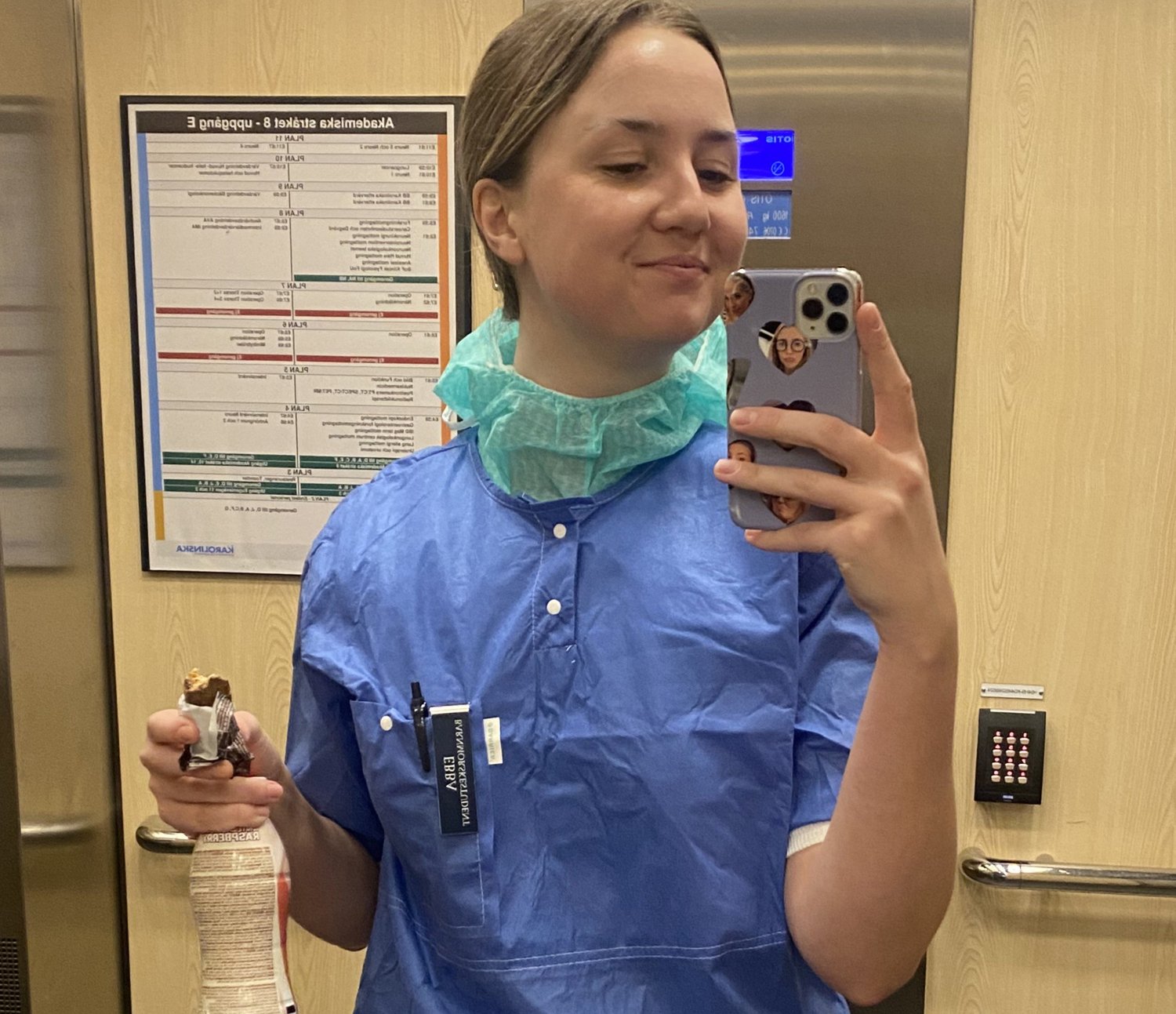From graduation to childbirth: Meet midwife Ebba Rehfeldt

Ebba Rehfeldt graduated from the midwifery program at Karolinska Institutet (KI) in January 2025. She has since moved from Stockholm to southern Sweden and started working as a midwife in a delivery ward.
“I have just finished my introduction and am now working as an independent midwife,” says Ebba Rehfeldt.
What inspired you to become a midwife?
“The female body! I’ve always found the female body fascinating, especially the reproductive organs and functions. I wrote my high school specialised work about endometriosis ten years ago, and it was then that the idea of becoming a midwife started to form,” says Ebba Rehfeldt.
What made you choose this program over other medical studies?
“I never had to choose between different programs; my path has always been clear. First, I became a nurse, then a midwife. During my nursing studies and throughout my career, I’ve kept an open mind about other specialties, but nothing has intrigued me as much as becoming a midwife,” says Ebba Rehfeldt.
Tell us a bit about the profession. What does a typical workday look like?
“On the delivery ward, I start my shift not knowing how it will begin or end. Some days, I walk straight into a room and deliver a baby. Other days, I might handle a complicated induction with difficult-to-interpret CTG (heart rate curves),” says Ebba Rehfeldt and continues:
“The shift begins with a report from the colleague who's finishing their shift. This is when I learn more about the patient: Is she a first-time mother or has she given birth before? What is her pregnancy and labor history? How far along is she in labor? Then, I meet my patient and take over where my colleague left off. Continuous support is key to success in obstetrics, and this often means spending many hours in the rooms. If I’m lucky enough to deliver a baby, I check on both the baby and the mother, do any necessary sutures, and document everything. It varies greatly from day to day.”
How do you handle the challenges that come with the job?
“The biggest challenge is when it's unclear how something should be handled. Most often, it’s about difficult-to-interpret CTG curves. My colleagues and I try to maintain an open environment and discuss the next steps together as a group, including both midwives and doctors. I try to approach the work with humility and without ego, as I’m still very new to the profession.”
Is the profession what you expected during your studies?
“Yes, it is! I feel education provided me with a solid and stable foundation. I tried to keep an open mind about the profession compared to the education, but so far, I haven’t been surprised or noticed any major differences between theory and practice," says Ebba Rehfeldt.
